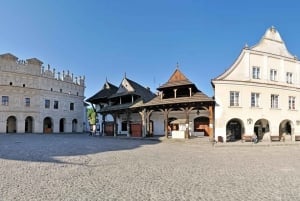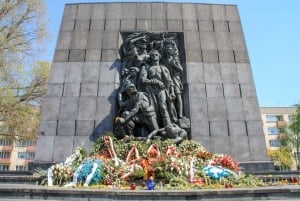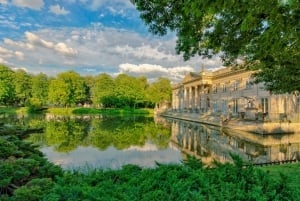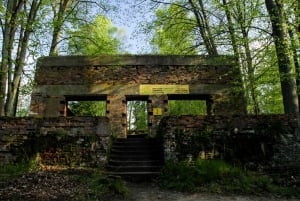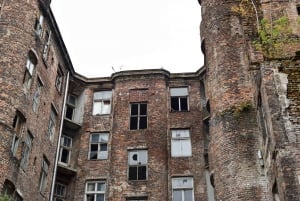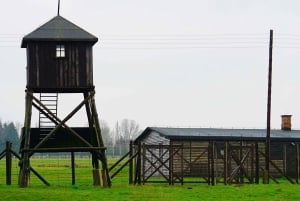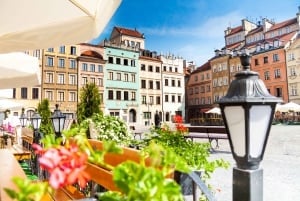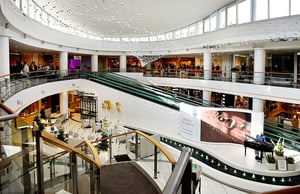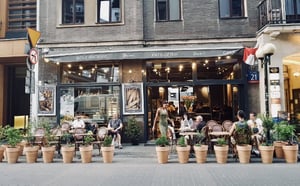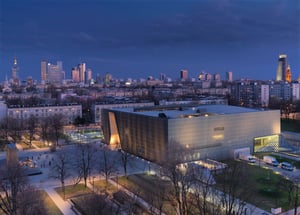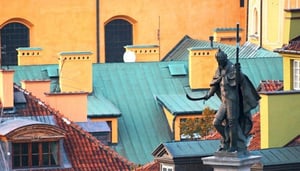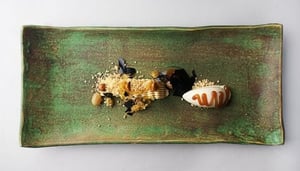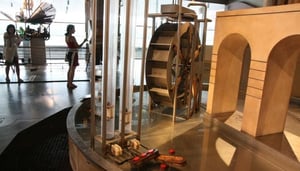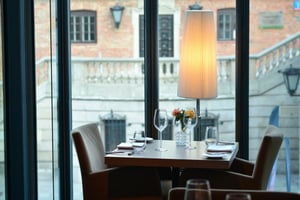City Sights
Once a disreputable run-down neighbourhood, Warsaw's right bank district of Praga is undergoing a rapid transformation. In recent years, it has become something of a fashionable Bohemian district and an alternative cultural centre. The only district in Warsaw to remain fairly intact after the Second World War, Praga now boasts some of the oldest surviving structures in the city, its streets taking on new life as townhouses and old industrial buildings are turned into cafés, clubs, art studios and theatres. For a taste of Praga, stroll through the 19th-century 'Old Town', see old factories turned into art galleries, have a drink in one of the new trendy cafés, wander the mostly untamed banks of the river, and end your exploration of the district at 11 Listopada Street, Praga's major clubbing centre.
HISTORIC PRAGA
Once an independent town, Praga was attached to Warsaw in the late 18th century. You can still find many original pre-war apartment blocks, pavements and lampposts dotting the district. This was also once a neighbourhood of rich cultural diversion, where Catholics, Orthodox Christians and Jews lived together peacefully, and throughout the district there are traces of several beautiful places of worship, some still in existence.
The centre of Praga's Old Town is Ząbkowska Street, with its oldest buildings dating from the 19th century. Walking along it, you can see the evolution of architecture from then until now. You'll find the oldest house on the street at number 14, a small single-storey structure from 1866. It's a little further along, on Targowa Street, that you'll find the oldest surviving houses in Praga - two modest buildings built for the Jewish merchant Berek Roghblith in 1819 and 1830, and later used as Jewish houses of prayer; the houses are currently being renovated for exhibition space. Zabkowska Street is a good place to start your exploration of the district and soak in the old-world atmosphere.
Even as the cities of Warsaw and Praga developed during the Renaissance, no permanent bridge was ever built between them; communication was by ferry or by crossing the ice in winter. You can still see the elegant, Greek-temple-styled Water Chamber on Klopotowskiego street, with its bas-relief of Neptune and his horse-drawn chariot, where the toll service for water crossings was managed. The first permanent bridge was built in 1864.
You'll find the only remaining trace of Renaissance Praga on Ratuszowa Street, where the Church of Our Lady of Loreto stands. It was built in the first half of the 17th century, a pink cake-like structure with thick, squat towers framing its Greek temple-styled front face.
The real beauty of Praga churches is the Cathedral of St. Michael the Archangel and Florian the Martyr, standing majestically in a green square near the riverbank and principle streets. Its two thin spires are clearly visible from the Old Town on the left bank. But the Cathedral is more than a symbol of the Praga district; it is a symbol of defiance against foreign rule. It was built in the 19th century in response to the forced Russification of Poland under Tsarist occupation. Its beautiful structure and 75-meter towers dominated the Orthodox Church which had been built nearby by Russian authorities to accommodate Praga's large population of Russian immigrants. The church was destroyed in World War II, with only the external walls and the statues of the two saints, Michael the Archangel and Florian the Martyr, miraculously surviving. It was reconstructed after the war using authentic 19th-century bricks.
The Orthodox Church in question - St. Mary Magdalene on Solidarnosc Avenue - still stands. It was actually built on the site of a Catholic church, which was destroyed by Russian authorities as a symbol of the domination of Russian culture over Catholic Poland. The church was inspired by Byzantine architecture. It survived the Second World War without significant damage, and still functions today.
Near the Cathedral, on Klopotowskiego Street, you'll find a former Jewish bathhouse from the early 20th century. It has a beautifully restored, elegantly embellished red brick façade. Originally a mikveh (Jewish ritual bath), it is now owned by the Jewish Community. The square next to the building used to contain the Praga synagogue; the communist authorities had it pulled down in 1961 and replaced with a playground.
PRAGA OF TODAY
Transforming disused factories and run-down townhouses into art centres, cafés and clubs is a trend that's really taken off in Praga in recent years.
The old vodka factory Koneser was in operation for over one hundred years. It was built in the late 19th century, a characteristic red brick industrial complex from the era. It has recently been renovated as a cultural center, including the Wytwornia theatre, art galleries (Klima Bochenska Gallery of modern art), and other cultural institutions.
Another example of utilitarian structures being put to cultural use is Mała Warszawa , a private art and business centre housed in a former 1916 factory that once produced marmalade, then sausages, and finally athletic shoes. Now, the buildings house an auditorium, meeting room, theatre hall, exhibition hall, and spaces for festivals, fashion shows, and other cultural events.
Yet another is the Wroblewski Warehouse complex on Inzynierska Street, a former storage and transportation company from the early 20th century, where Warsaw residents would store their furniture and valuables when the traveled. The warehouse now houses many art studios and galleries, including the Sen Pszczoly Club, Nizio Gallery and Studio Melon.
In addition to a vibrant cultural life, Praga also boasts many beautiful stretches of green parkland. One such spot worth visiting is Park Praski, just outside the Zoological Gardens. In the early 19th century, this area of Praga was razed by Napoleon in preparation for new fortifications. The influence of Napoleon didn't last long, and by the mid-19th century, city authorities decided to do something more recreational with the space. Today you can wander along vast stretches of pleasant tree-lined lawns, or see an open-air concert at the park's outdoor stage.
Another pearl of Praga is Skaryszewski Park, a massive stretch of green in the southern part of the district that includes tennis courts, a sports stadium, a rose garden, a children's playground, a small lake and two picturesque ponds. The park is also something of an open-air art gallery, featuring several beautiful works of sculpture created before the war by up-and-coming artists of the time.
Praga is a perfect example of the change that's taking place in the Warsaw of today - a city that's prepared to revitalize traces of the old with currents of the new.
